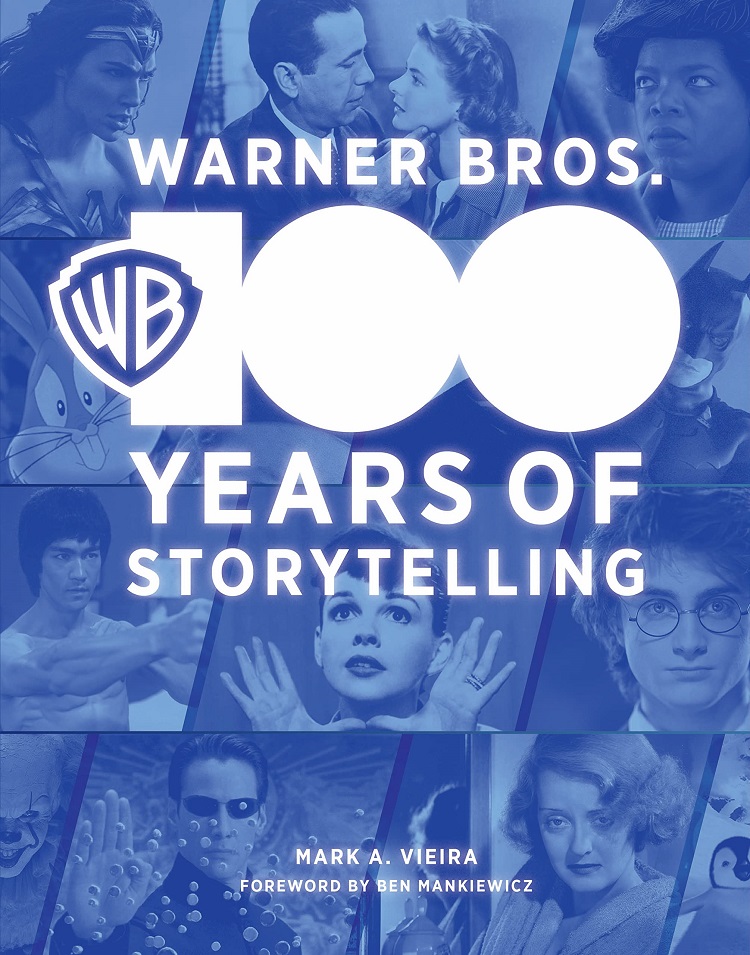
After TCM host Ben Mankiewicz sings the studio’s praises in the Foreword to Warner Bros.: 100 Years of Storytelling, author Mark A. Vieira’s Preface gives an overview of the studio’s history, “a story that began not in Hollywood…but in a ghetto in Eastern Europe,” and of the book, which he says “could be the [Warner] family album.”
100 Years… breaks down the studio’s centennial by doing a chapter on each decade, starting with the studio’s formation in 1920s by Warner brothers – Harry, Albert, Sam, and Jack – which was bolstered by the hiring of producer Harry Rapf and then Darryl F. Zanuck, loans from financier Waddell Catchings, and the success of their first movie star, Rin-Tin-Tin. It concludes in 2022 with DC Comics films, both animated (DC League of Super Pets) and live action (The Batman).
Right from the start, Vieira deals with known names as he details Warner Bros. putting actor John Barrymore and director Ernst Lubitsch under contract, but he also reveals the breadth of the book’s coverage by writing about technical aspects of the business such as Warners’ acquisition of Vitagraph as they brought sound to theaters with Don Juan (1926) and The Jazz Singer (1927), the latter which premiered at their Manhattan theater.
The book moves through the years, not only detailing Warner Bros. successful productions but also covering events that impacted the studio and the industry. During the ’30s, Warner Bros. became considered major studio by its rivals thanks in part to its success with gangster movies. During the ’40s, the growing war in Europe and the House Un-American Activities Committee impacted Hollywood and the country. During the the ’50s, Hollywood responded to television. During the ’60s, Hollywood responded to the new, baby boomer audience. The traditional studio method fell by the wayside, allowing the rise of the New Hollywood movement and auteur filmmakers through the ’70s. Each decade brought new challenges and new filmmakers. Each chapter concludes with archival photos and details about the studio’s Academy Award wins and nominations.
Of course, the 2020s is a short chapter being only a few years into it at the time of his writing yet Vieira is able to detail the impact of the Covid shutdown and briefly mentions Warner Bros. Discovery CEO David Zaslav while skipping over decisions he made that outraged many film fans.
Noted as an “official history,” Warner Bros.: 100 Years of Storytelling isn’t an unexpurgated version of studio events. For example, the DC Snyderverse movies of the 2010s are mentioned along with most their box-office grosses, but missing is how poorly received they were and how an obnoxious fanbase arose online incessantly calling for the Snyder Cut of Justice League. This sanitized view occurs each decade, which is a shame because a studio’s failures, both at the box office and in its treatment of talent, are just as interesting as its successes, maybe more so because they have lessons to teach.
While it doesn’t tell the whole story, Warner Bros.: 100 Years of Storytelling is a fun trip down movie memory lane.